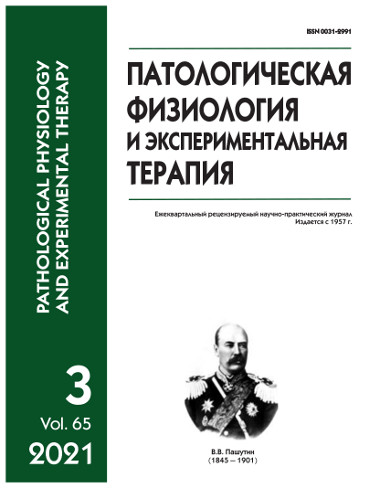Effects of preformed physical factors on blood rheology in patients with chronic post-embolic pulmonary hypertension
Abstract
Introduction. Electrical and bioenergetic processes that cause changes in central and peripheral hemodynamics, metabolic processes, trophism, respiration, reactivity, and body resistance are the basis of interaction between physical factors and the body. Such physical factors include, in particular, electromagnetic oscillations of the optical radiation or phototherapy. Aim: to assess the effectiveness of short-wave radiation (photohemotherapy, PHT) and ultraviolet (UV) irradiation of blood on its rheology in the complex treatment of chronic post-embolic pulmonary hypertension (CPPH). Methods. 64 patients (30 women and 34 men) with symptoms of chronic pulmonary insufficiency secondary to pulmonary embolism underwent a comprehensive clinical and laboratory examination. CPPH patients were divided into 3 groups: the 1st (control) group consisting of 15 patients who received only a basic treatment; the 2nd (experimental) group including 26 patients who received a basic therapy combined with PHT; and the 3rd (experimental) group consisting of 23 patients who received a basic therapy combined with UV irradiation of blood. AFS-Solaris devices (Russia) producing light-emitting diode-derived blue light with a wavelength of 450 ± 10 nm were used for FGT, and UV rays with a wavelength of 365 ± 10 nm were used for the UV exposure of blood. Blood viscosity was measured on a RotoVisco-100 (Нааке GmbH, Germany) rotational viscometer at shear rates ranging from 1 to 150 s–1; erythrocyte aggregation was studied with a FEK-56 M (Russia) colorimeter-nephelometer; and hematocrit was measured with a hematocrit centrifuge (Autocrit, USA). Results. There were no statistically significant changes in blood viscosity, erythrocyte aggregation, or hematocrit values in the 1st group after the basic treatment. Statistically significant changes in blood rheology parameters observed in both the 2nd and 3rd groups included decreases in blood viscosity, erythrocyte aggregation, and hematocrit values. Conclusion. Optical irradiation with blue light exerted a pronounced physiological effect evident as a slow but long-standing positive influence on blood rheology parameters. The UV irradiation of blood also improved hemorheology and blood circulation and activated rudimentary mechanisms triggering previously non-functional adaptive systems.






